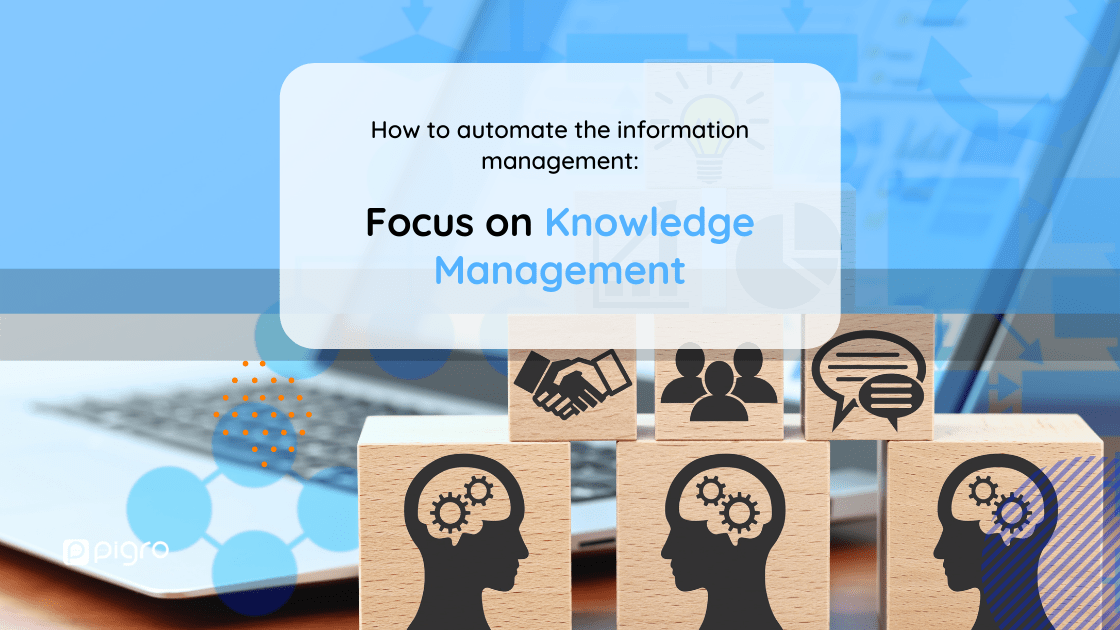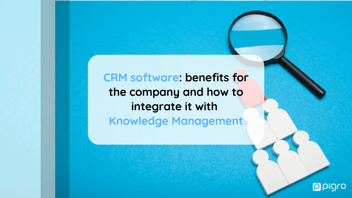Meaning of Knowledge Management
A definition of Knowledge Management was first given by Karl Wiig, who theorised its foundations during a conference of the United Nations International Labour Organisation (1986):
Knowledge Management is the systematic, explicit, and deliberate building, renewal, and application of knowledge to maximize an enterprise’s knowledge-related effectiveness and returns from its knowledge and intellectual capital assets.
From that moment until today, knowledge management concepts have evolved to take on an increasingly fundamental role within organizations of all kinds.
The object of this discipline is the Knowledge Base, the mass of information made up of explicit knowledge (documented and easily transferable) and implicit knowledge, which resides in employees and staff and is linked to the experience of each person and the work context. It is, in fact, above all the best practices for problem-solving that enable companies to improve their performance.
If you want to know how to make the most of Knowledge Management, contact a Pigro Expert for free. Otherwise, keep on reading the article to learn more.
The importance of the corporate Knowledge Base
Before we explain knowledge management in deeper, it is important to understand its value related to the company knowledge base.
As seen in the previous article on Knowledge Hoarding, it may happen that some employees hoard information as this makes them feel validated within the company: their coworkers must turn to them to solve problems or simply to get the information they need to do their job.
When this happens, it means that the corporate Knowledge Base is not accessible to everyone, there is no company culture of Knowledge Sharing and, therefore, people are not even willing to share knowledge accumulated through experience.
Every time we talk about Knowledge Base we obviously refer to the wealth of information and procedures that are fundamental to employees and customers: it's the so-called company’s know-how. Tacit knowledge, or implicit knowledge, is its most valuable element because it is composed of best practices and decision-making processes put into practice by company players, tested over time and passed on (in part) through experience.
For this reason, it is important that the knowledge assets are easily accessible and shared among the various departments, so that everyone, according to his or her role, can exploit the information made available to carry out his or her work in the best possible way.
What is Knowledge Management: how to manage information and improve productivity
Knowledge Management aims to collect and manage the company's knowledge, eliminating redundancies and knowledge gaps, which could emerge if documentation is kept separate from each department instead of being shared among them.
By creating a single database where all intellectual capital is collected, the company's know-how is protected and the search for data and information is facilitated, consequently causing an increase in staff efficiency.
Content sharing among all departments ensures the alignment of interdisciplinary objectives. It also improves communication and collaboration among employees, making it easier to develop projects and create new knowledge.
Knowledge Management development today
Given the large amount of data companies produce today and the consequent difficulties in managing knowledge, one of the priorities is to identify, map, and manage essential information, as well as ensure collaboration between teams and implement processes for transferring experience.
According to the annual survey conducted by APQC on the implementation of Knowledge Management programs and various global goals, less than half of the respondents have adapted their corporate strategies to support KM and have well-defined processes regarding the circulation of knowledge within their organisations.
In fact, according to the APQC research, only in 55% of cases the KM strategy in organisations is aligned with the vision, mission, and corporate culture.

Knowledge Management System characteristics
Corporate Knowledge Management, therefore, seeks at enabling knowledge circulation and information-storing within the enterprise, giving employees easy access to information when needed: your business will certainly benefit from a good knowledge management system!
In order to implement this type of activity, it is necessary to use knowledge management tools, which allow to import the entire know-how and give it back when required.
By Knowledge Management systems we mean any IT system that allows us to:
1. Acquire, store and retrieve information
To do this, the KMS must import - or create from scratch - the knowledge base from which it can extract the answers and the documents required at the right time.
Document management software can automate this import, without the need to rewrite the content in a language other than the natural language used, allowing to optimise the implementation time of the system.
2. Index and manage knowledge
In the process of creating corporate information repositories, knowledge can be indexed in categories to facilitate its subsequent navigation. Thanks to Artificial Intelligence, Knowledge Management systems have evolved and even this step can be automated, rapidly integrating solutions into business processes.
3. Easily allocate business resources
As a consequence of the circulation of information through corporate knowledge management, procedures and decision-making processes to perform any job will be faster to apply. No more time will be wasted searching for answers and solving repetitive tickets, but everyone in his or her role will be able to make decisions autonomously, with all the knowledge he or she needs.
The availability of free and easy access to documents, product sheets, price lists and any other type of file makes it possible to optimise time and costs for both the Help Desk and Customer Service, offer better services and have more satisfied customers.
4. Constitute a valuable mine of hidden knowledge
The advantage of good corporate know-how management is to exploit the implicit knowledge built up through the experience of employees. In order to make use of best practices and proven problem-solving procedures, it is necessary to spread the culture of knowledge sharing and offer ways of collecting knowledge. Making knowledge easily accessible to everyone is the best way to avoid time-wasting and productivity.
Sharing best practices and know-how can be a competitive advantage for companies. Knowledge dispersion is a risk whenever an employee leaves or changes roles. Therefore, it is necessary that information does not remain the prerogative of one person, but is shared with colleagues as much as possible so that it can be easily searched and used.
5. Continuously manage the content lifecycle
The updating and maintenance of the content on which the KMS is based are also essential to ensure the quality of the information.
For this reason, with KM software, it should be possible to manage roles and processes of content editing and approval. Furthermore, it is top management’s responsibility to establish and document procedures for content review and apply them regularly.
However, these activities may require time and resources already spent on other tasks, but they can be optimised by systems that automate the analysis of the knowledge base. For example, Pigro Knowledge Insights measure the quality of the content by identifying gaps, poorly structured files, disorganised repositories, and misleading information.
6. Stimulate collaboration and create new knowledge
Last but not least, a KMS can help others to learn and produce new knowledge. It is the project manager who has to promote a culture of collaboration and encourage employees to learn, pursue their goals, and do business. By fostering a spirit of collaboration and sharing, the growth of new ideas is stimulated and a culture of innovation spreads throughout the company. If everyone is recognised for his or her importance and contribution to the better circulation of knowledge, exchanging information and ideas will also come naturally: a real loop of productivity.
Read more on How to implement Knowledge Management with Dynamic document management.
Want to know more on Pigro Knowledge Management solution? Contact us!



